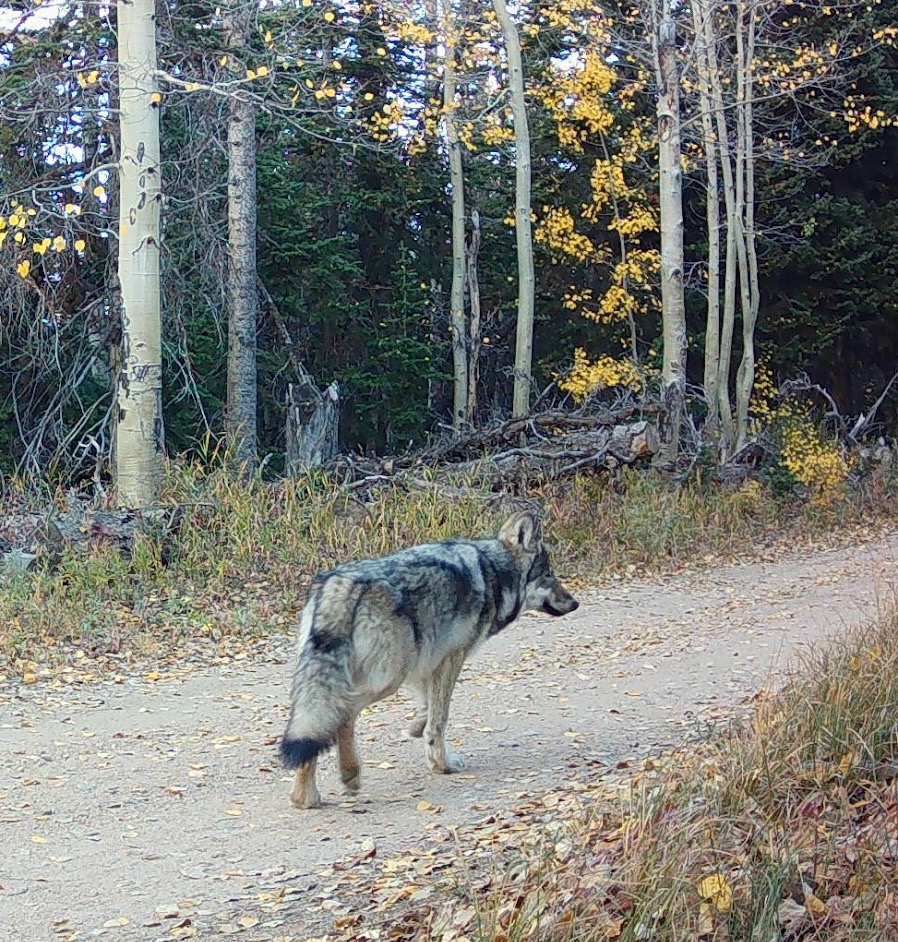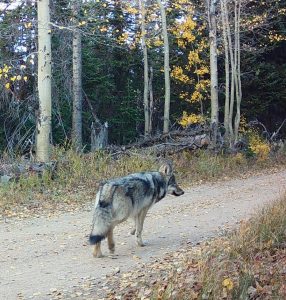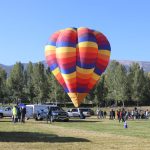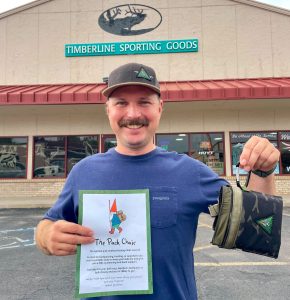Colorado Parks and Wildlife: Officials shot chronic depredating wolf in Rio Blanco County, but could not locate it
State wildlife officials identified the wolf as the fifth Copper Creek Pack yearling that evaded capture last year

Colorado Parks and Wildlife/Courtesy Photo
More than a week after concluding an unsuccessful search for a chronic depredating wolf in Rio Blanco County, Colorado Parks and Wildlife has released its full report on the failed attempt to kill the animal.
Officials shot the wolf once and found evidence that the animal was hit, but could not locate it following an extensive search.
DNA collected from blood and bone fragments during the search identified the wolf as the fifth Copper Creek Pack yearling that was not successfully captured in fall 2024.
Colorado Parks and Wildlife captured the Copper Creek Pack in August 2024 after the pack was connected to numerous livestock killings in Grand County. Between Aug. 30 and Sept. 5, the agency captured what it believed was all six members of the pack. This included the adult male and female wolves, as well as four pups. The adult male wolf died four days after his capture.
A few weeks later, a fifth wolf pup was found on camera in Grand County. After 19 days of attempting to capture the wolf, Parks and Wildlife concluded its efforts.
The remaining members of the pack were released in January.
Last month, Parks and Wildlife determined a lone, uncollared wolf was to blame for three depredation events in Rio Blanco County that occurred between late July and early August of this year. This met the agency’s “chronic depredation” definition, marked by three or more wolf depredations in 30 days.
On Aug. 13 and 15, staff from the Division of Wildlife Services attempted to call the uncollared wolf with electronic calls with no success.
On Aug. 16, officials were notified of another depredation event in which a lamb was killed. The attack, and the three previous attacks, were within 6.5 miles of each other, according to the report.
The recent depredation gave the Division of Wildlife staff a clearer picture of the wolf’s location. That night, officials went to a location between the sheep herd and the likely location of the wolf.
“They did not howl or use any kind of call but heard a wolf howl from a location that suggested they were between the wolf and the sheep,” the report read.
Officials used thermal optics, or a type of night vision, to locate the wolf then shot the wolf once with a .25-06 rifle. Staff searched for the wolf but were unable to locate it.
The next day, dogs were brought to the site to help locate the wolf. Officials found evidence that the wolf had been hit and followed the trail until it was lost.
On Aug. 18, officials returned to the last known location and continued the search but found nothing. Blood samples and bone fragments were collected for genetic analysis.
After three more days of searching, Aug. 19-21, the wolf was not located.
No depredations have been reported since Aug. 16.
Ali Longwell contributed to this reporting.

Support Local Journalism

Support Local Journalism
Readers around Glenwood Springs and Garfield County make the Post Independent’s work possible. Your financial contribution supports our efforts to deliver quality, locally relevant journalism.
Now more than ever, your support is critical to help us keep our community informed about the evolving coronavirus pandemic and the impact it is having locally. Every contribution, however large or small, will make a difference.
Each donation will be used exclusively for the development and creation of increased news coverage.









